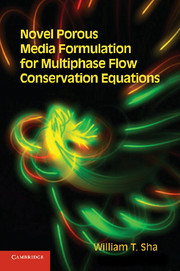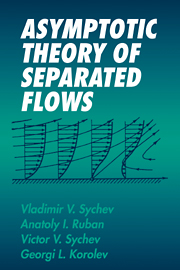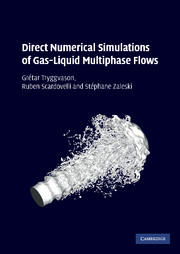Refine search
Actions for selected content:
5487 results in Thermal-fluids engineering
Appendix H - Introduction to Maple
-
- Book:
- Thermodynamics
- Published online:
- 05 June 2012
- Print publication:
- 10 October 2011, pp 1057-1058
-
- Chapter
- Export citation
9 - Refrigeration and Heat Pump Cycles
-
- Book:
- Thermodynamics
- Published online:
- 05 June 2012
- Print publication:
- 10 October 2011, pp 529-628
-
- Chapter
- Export citation
8 - Power Cycles
-
- Book:
- Thermodynamics
- Published online:
- 05 June 2012
- Print publication:
- 10 October 2011, pp 385-528
-
- Chapter
- Export citation
16 - Compressible Flow
-
- Book:
- Thermodynamics
- Published online:
- 05 June 2012
- Print publication:
- 10 October 2011, pp 1009-1014
-
- Chapter
- Export citation
10 - Property Relations for Pure Fluids
-
- Book:
- Thermodynamics
- Published online:
- 05 June 2012
- Print publication:
- 10 October 2011, pp 629-720
-
- Chapter
- Export citation
2 - Thermodynamic Properties
-
- Book:
- Thermodynamics
- Published online:
- 05 June 2012
- Print publication:
- 10 October 2011, pp 34-91
-
- Chapter
- Export citation
Frontmatter
-
- Book:
- Thermodynamics
- Published online:
- 05 June 2012
- Print publication:
- 10 October 2011, pp i-iv
-
- Chapter
- Export citation
Acknowledgments
-
- Book:
- Thermodynamics
- Published online:
- 05 June 2012
- Print publication:
- 10 October 2011, pp xvii-xviii
-
- Chapter
- Export citation
Appendix B - Property Tables for Water
-
- Book:
- Thermodynamics
- Published online:
- 05 June 2012
- Print publication:
- 10 October 2011, pp 1019-1030
-
- Chapter
- Export citation
4 - General Application of the First Law
-
- Book:
- Thermodynamics
- Published online:
- 05 June 2012
- Print publication:
- 10 October 2011, pp 151-203
-
- Chapter
- Export citation

Novel Porous Media Formulation for Multiphase Flow Conservation Equations
-
- Published online:
- 07 October 2011
- Print publication:
- 26 September 2011

Asymptotic Theory of Separated Flows
-
- Published online:
- 07 October 2011
- Print publication:
- 28 August 1998

Direct Numerical Simulations of Gas–Liquid Multiphase Flows
-
- Published online:
- 07 October 2011
- Print publication:
- 10 March 2011

Life and Letters of James David Forbes
-
- Published online:
- 07 October 2011
- Print publication:
- 10 June 2010
- First published in:
- 1873
6 - Time averaging in relation to local volume averaging and time-volume averaging versus volume-time averaging
-
- Book:
- Novel Porous Media Formulation for Multiphase Flow Conservation Equations
- Published online:
- 07 October 2011
- Print publication:
- 26 September 2011, pp 117-124
-
- Chapter
- Export citation
Appendix B
-
- Book:
- Novel Porous Media Formulation for Multiphase Flow Conservation Equations
- Published online:
- 07 October 2011
- Print publication:
- 26 September 2011, pp 184-187
-
- Chapter
- Export citation
Nomenclature
-
- Book:
- Novel Porous Media Formulation for Multiphase Flow Conservation Equations
- Published online:
- 07 October 2011
- Print publication:
- 26 September 2011, pp xxvii-xxxiv
-
- Chapter
- Export citation
Frontmatter
-
- Book:
- Novel Porous Media Formulation for Multiphase Flow Conservation Equations
- Published online:
- 07 October 2011
- Print publication:
- 26 September 2011, pp i-v
-
- Chapter
- Export citation
Acknowledgments
-
- Book:
- Novel Porous Media Formulation for Multiphase Flow Conservation Equations
- Published online:
- 07 October 2011
- Print publication:
- 26 September 2011, pp xliii-xliv
-
- Chapter
- Export citation
Figures and Table
-
- Book:
- Novel Porous Media Formulation for Multiphase Flow Conservation Equations
- Published online:
- 07 October 2011
- Print publication:
- 26 September 2011, pp xv-xviii
-
- Chapter
- Export citation
